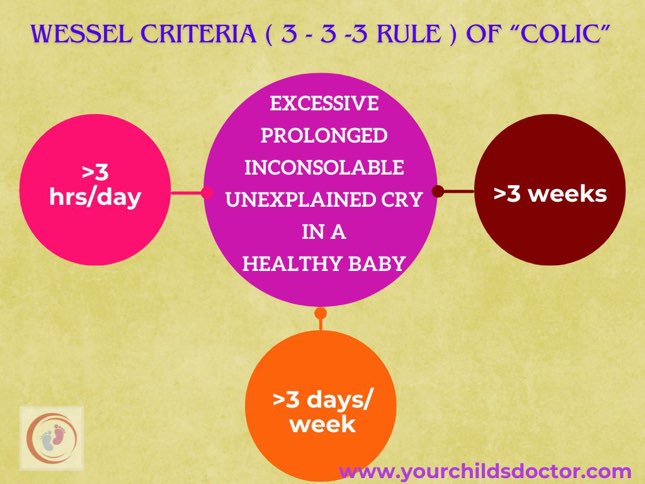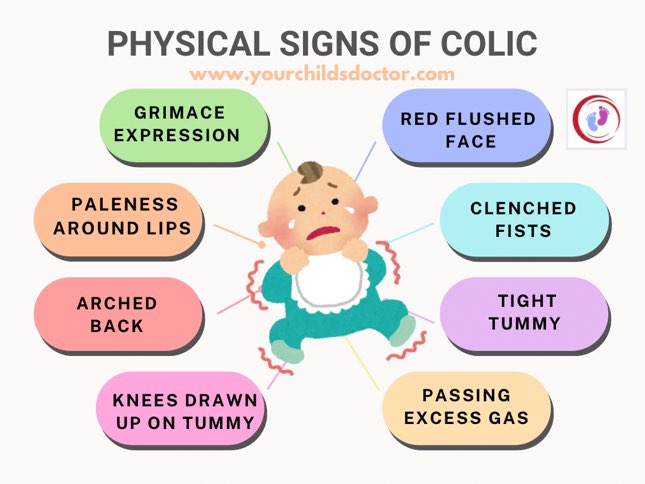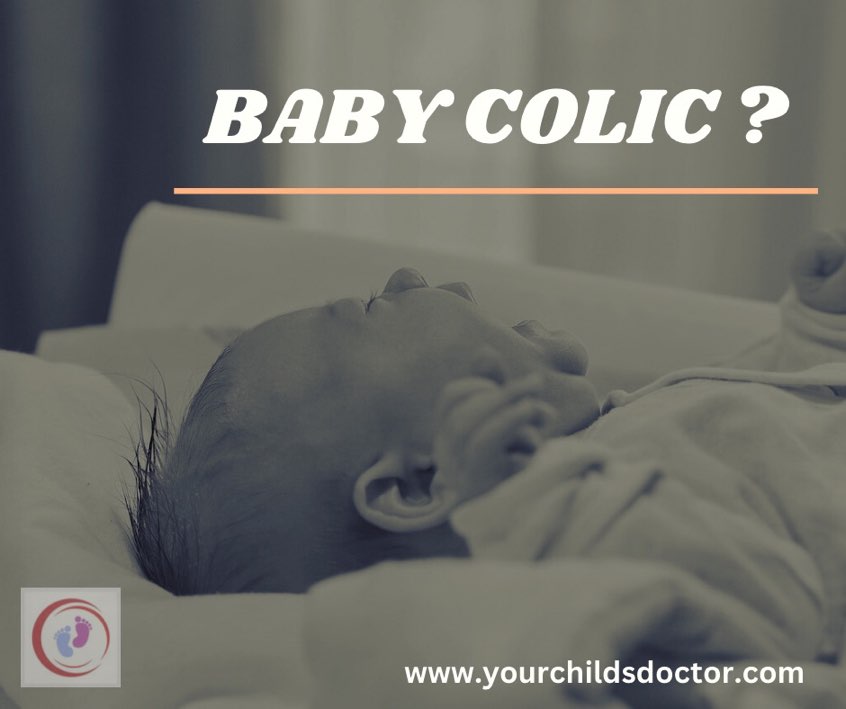Nothing is more wearing than handling a fussy and crying colic baby. New parents will definitely agree to it. Extreme ‘tiredness’ of sleepless nights, ‘helplessness’ of not able to soothe the baby and unspoken ‘parental-guilt’ add up together.
Moreover, parents are bombarded with a ton of suggestion and information. Even so they do not get a precise understanding of baby colic.
Thus, in this post we will clear some common doubts regarding colic in babies. Like which babies suffer the most from colic, at what age it is maximum and when it stops. We will also talk over, whether mother’s diet has anything to do with baby colic. Keep reading to find out more.
15 FACTS ABOUT BABY COLIC PARENTS MUST KNOW
General understanding of ‘Colic babies’ is that, they are just gassy and fussy babies. Well it is partially true. There are many facts about infant colic which parents do not know. Let us look into them one by one.
1.How many hours does a normal newborn cry per day?
Babies do cry a lot. As per AAP a normal newborn cries for round about 2-2.5 hours a day.
2.How does colic cry appear like?
Colic is a sudden loud cry in an otherwise healthy baby, which persists even after comforting it. This is less like crying but more like screaming out of pain. And this pain is related to abdominal discomfort ( tummy pain ).
Below are 5 typical features of colic that are fundamental to know.
Colic presents itself in an otherwise healthy baby. The baby has no other issue and is well thriving ( i.e. gaining adequate weight as per age ).
In colic, baby starts crying all of a sudden. This outcry is loud, intense and high pitched
Excessive cry persists even after parents or care takers try to comfort the baby. Still they can not console it ( inconsolable ), by traditional soothing methods.
The duration is more compared to normal crying ( more than 3 hours a day ). This is discussed in particular below, under Wessel’s criteria.
There is absolutely no underlying reason, why baby is crying. That is to say, to label it to be colic, other serious ( organic ) causes of excessive cry in babies should be ruled out.
3.What is ‘rule of 3’ of Colic ?
A scientist named Wessel studied paroxysmal cry ( on and off bouts of cry ) in fussy infants and came out with concept of colic. He introduced rule of 3.
This rule says, when a healthy baby cries excessively and inconsolably for more than 3 hours a day, for more than 3 days a week for more than 3 weeks, without any underlying cause then this is colic.
We have depicted Wessel’s criteria in the picture below for a better understanding.

But this law has some flaws. We may not wait for a period of 3 weeks to say it is colic. Furthermore, what if a baby cries for slightly less than 3 hours! So instead of sticking to this rigid definition of colic by rule of 3, physicians diagnose it, based on their clinical judgement and experience.
4.How much percentage of babies develop colic ?
Colic is seen in less than 6 months old babies. Up to 10-26% of all infants are troubled with it. In some population this number can be as high as 40%.
To put in simple words 1 out of every 5 infants ( 20% ) suffer from colic.
5.At what age colic is maximum? At what age colic pain stops ?
Colic comes into effect once a baby is 2-3 weeks of age. It increases gradually and reaches its peak at around 6 weeks.
Being said that, 1.5 months old baby develops highest colic. Afterwards, over time it reduces and disappears mostly by 4 months of age. In very few babies colic can sustain till 6 month of age.
However this timeline is not the same for preterm babies. Which is calculated as per corrected gestational age of baby. This is discussed in detail in another blog.
“WHEN COLIC STARTS AND WHEN IT GOES AWAY?”
6.At what time of day infant colic occurs?
Usually colic starts off between late afternoon to evening. Approximate time you can say is between 6pm to midnight.
7.How to differentiate between colic and hunger cry?
When a mother sees her baby crying out of colic, she can sense that, it is not an everyday cry. Instead it is more like screaming out of pain. As if it is an urgent call.
Scientifically following are the basic differences between colic and hunger cry.
|
HUNGER CRY |
COLIC |
|
|
1. |
Hunger cry shows up as intermittent weak cry. When feeding demand is not met it later becomes louder. |
Colic in the other hand starts suddenly. |
|
2. |
Hunger cry is not as much intense. |
Colic is high pitched, intense, loud cry more like screaming. |
|
3. |
Hunger cry has no definite timing. |
But colic happens most often in evening. |
|
4. |
Holding and soothing the baby helps, if it is a hunger cry. |
However if it is colic, conventional soothing techniques doesn’t help. |
|
5. |
Feeding a baby stops hunger cry. |
In most cases feeding does not relive colic. At times over feeding may worsen colic. |
|
6. |
In early stage of hunger cry, baby will turn head side to side in search of nipple, suck its own hand and smack its lips. If hunger becomes severe it moves all four limbs in different directions out of frustration. |
Physical signs of colic are characteristically distinct, which are showed in image below. |

8.Which gender babies are more prone for colic?
There is no specific gender predisposition for colic. It is equally common in both male and female babies.
9.Which babies more prone for colic, is it preterm or term baby ?
Term babies are the babies born in time ( after complete 37 weeks ) and preterm ( premature ) are the ones delivered before 37 weeks.
Experts say that colic frequency is same in term and preterm. Yet there are few studies which document that colic is more common in preterm and in small for gestation babies ( babies who have less weight as per their age ).
10.Is colic more prevalent in formula fed babies compared to breastfed ones?
There is this notion in general population that formula milk leads to colic in babies. This sentiment has no logical basis. Incidence of colic is same in formula fed as well as breast fed babies.
However breast feeding has innumerable other benefits. Hence breast milk is always encouraged as best food for baby.
Important note
No other commercial milk can replace colic.
11.Significance of gas and colic.
Colic babies are fussy and gassy. Is it because of gas, a baby incurs colic or colic leads to gas ? Well, there are multiple theories.
Some experts say that immature gut and immature nerves in newborn brings about colic. Afterwards when a baby cries persistently, it swallows extra air causing gas to accumulate.
Some other theories say that colic is because of defective feeding practices like delayed feeding, over-feeding, under-feeding, in adequate burping. Due to this, unwanted gas accumulate inside gut of baby and cause colic. And as soon as baby passes gas out, it becomes better.
12.Probiotics in colic
Researchers have discovered that babies with colic has altered set of intestinal microbes compared to other normal babies. They have more E.Coli in compared to Lactobacillus.
Wherefore Lactobacillus reuteri containing Probiotic products are actually helpful in colic.
Also read : 13 WAYS HOW BACTERIA IN GUTS OF KIDS ARE HELPFUL
13.Should I give gripe water to relieve colic?
Gripe water is something which is extensively advertised as ‘Trusted by generations of mothers’. Oddly it has entered into belief system so much that, even few doctors also started prescribing it. But what does science say ?
There are not enough research to back benefit of gripe water. In fact, cross sectional studies show that it is harmful for babies.
Babies who are given gripe water for improving digestion, are more likely to struggle with infantile colic and also vomiting.
Furthermore, gripe water can grow few malicious bacteria. Few cases of severe infection and sepsis were reported due to this.
14.What are short term and long term effects of colic ?
As such infantile colic doesn’t have any short term or long term ill effect on a baby.
Following are few indirect consequences listed below.
- Inconsolable cry of baby paired with parents’ lack of sleep beget stress and anxiety in parents.
- If mother is suffering from post partum depression, a fussy baby worsen her situation.
- Stress might translate into reduced breast milk secretion. Or else mother will be less motivated for breast feeding.
- If parents shake child vigorously to put a stop to crying. Which culminates in “Shaken baby syndrome” and permanent brain injury to baby.
15.What is impact of mother’s diet on colic of a baby ?
An extremely rare population ( <5% ) of infants with colic have food allergy as an underlying cause of tummy pain. If mother is taking cow milk/ egg/ nut/wheat etc and baby is allergic to the particular product then baby will cry intensely.
Hence, if a baby has vomiting/ diarrhoea / blood in stool/ allergic rash over skin/ family history of allergy etc then consult a doctor. Do not withhold these products on your own as mother’s nutrition is exceedingly important for a baby.
Read specifics on cow milk protein allergy in our article “ EVERYTHING YOU NEED TO KNOW ABOUT COW MILK ALLERGY IN BABIES“.
Bottom line is, there should not be any restriction in mother’s diet. Because a mother’s diet has barely any connection to infant colic. However liquid and water intake of a lactating mother should be adequate.
Conclusion
The most important thing about colic, that parents need to remember is that, colic is a normal physiology in babies. It is absolutely no one’s fault if a baby endures colic. Stop blaming yourself and stay calm.
Share this article if you feel like there is a mother or father out there who might get immense benefit from it. Help parents understand colic better. Comment your valuable suggestion below.
Caution
All the informations provided here are for educational and awareness purpose only. Kindly do not use these as alternative to medical consultation.


